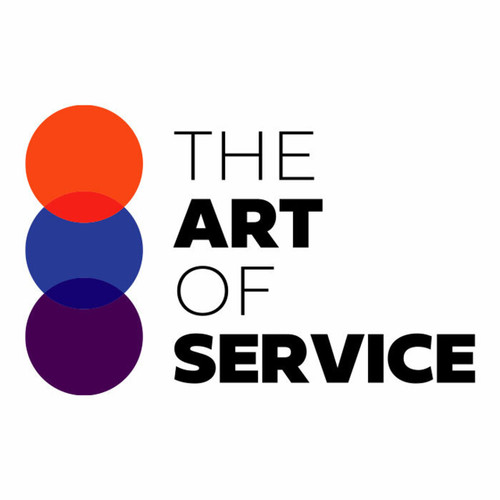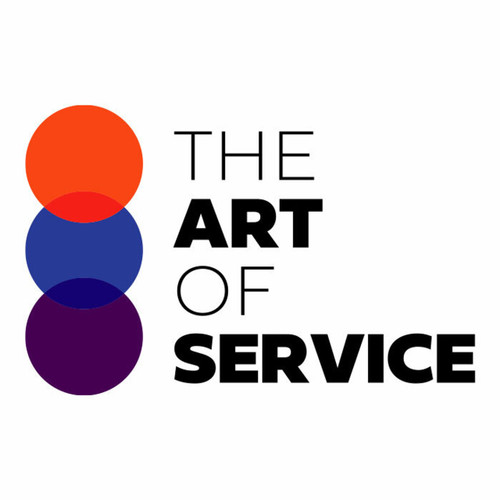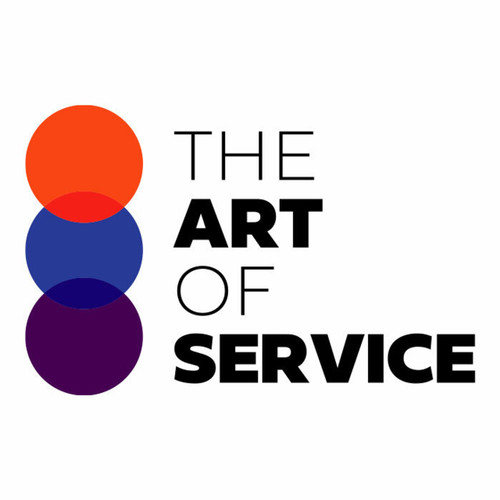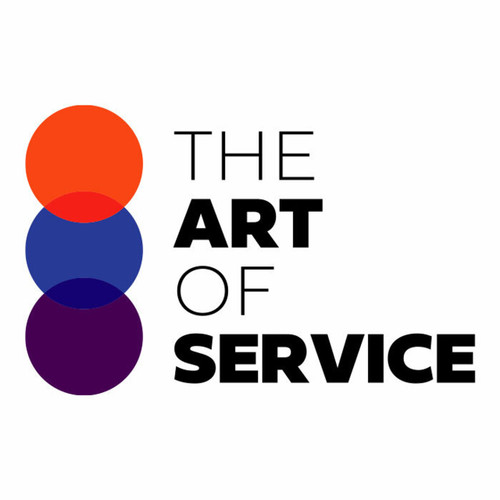With over 1500 prioritized requirements, solutions, benefits, and results, our dataset is the most effective tool for professionals and businesses alike.
Our Knowledge Base is designed to handle urgent and large-scale projects with ease.
We have carefully crafted the most important questions to ask to get results, taking into account both urgency and scope.
This ensures that you get accurate and reliable outcomes, every time.
What sets our Common Mode Failure and Failure Mode and Effects Analysis Knowledge Base apart from competitors and alternatives is its unparalleled quality and depth of information.
Our dataset covers all aspects of this critical analysis, making it an invaluable resource for professionals in the field.
Not only that, our product is user-friendly and suitable for both experts and beginners.
We provide easy-to-use tools and guides, making it a DIY and affordable alternative to hiring costly consultants.
With a detailed product specification overview, you can find exactly what you need for your specific project, without any hassle.
Unlike semi-related products, our Knowledge Base is specifically tailored for Common Mode Failure and Failure Mode and Effects Analysis.
This means that you get the most relevant and accurate information, giving you a competitive edge in your field.
But the benefits don’t end there.
Our dataset has been thoroughly researched, ensuring that you have the most up-to-date and accurate information at your fingertips.
With our Common Mode Failure and Failure Mode and Effects Analysis Knowledge Base, you can save time and resources and achieve better results in your projects.
For businesses, our Knowledge Base offers a cost-effective solution compared to hiring expensive consultants.
You can now perform this crucial analysis in-house, saving time and money while still getting top-notch results.
We understand that every project is unique, which is why we also offer customizable solutions.
Our dataset comes with real-world case studies and use cases, providing practical examples for you to apply in your own projects.
In summary, our Common Mode Failure and Failure Mode and Effects Analysis Knowledge Base is a game-changer in the industry.
It provides a comprehensive, reliable, and cost-effective solution for professionals and businesses alike.
So why wait? Get your hands on our dataset and take your projects to the next level today!
Discover Insights, Make Informed Decisions, and Stay Ahead of the Curve:
Key Features:
Comprehensive set of 1501 prioritized Common Mode Failure requirements. - Extensive coverage of 100 Common Mode Failure topic scopes.
- In-depth analysis of 100 Common Mode Failure step-by-step solutions, benefits, BHAGs.
- Detailed examination of 100 Common Mode Failure case studies and use cases.
- Digital download upon purchase.
- Enjoy lifetime document updates included with your purchase.
- Benefit from a fully editable and customizable Excel format.
- Trusted and utilized by over 10,000 organizations.
- Covering: Reliability Targets, Design for Manufacturability, Board Best Practices, Effective Presentations, Bias Identification, Power Outages, Product Quality, Innovation, Distance Working, Mistake Proofing, IATF 16949, Strategic Systems, Cause And Effect Analysis, Defect Prevention, Control System Engineering, Casing Design, Probability Of Failure, Preventive Actions, Quality Inspection, Supplier Quality, FMEA Analysis, ISO 13849, Design FMEA, Autonomous Maintenance, SWOT Analysis, Failure Mode and Effects Analysis, Performance Test Results, Defect Elimination, Software Applications, Cloud Computing, Action Plan, Product Implementation, Process Failure Modes, Introduce Template Method, Failure Mode Analysis, Safety Regulations, Launch Readiness, Inclusive Culture, Project communication, Product Demand, Probability Reaching, Product Expertise, IEC 61508, Process Control, Improved Speed, Total Productive Maintenance, Reliability Prediction, Failure Rate, HACCP, Failure Modes Effects, Failure Mode Analysis FMEA, Implement Corrective, Risk Assessment, Lean Management, Six Sigma, Continuous improvement Introduction, Design Failure Modes, Baldrige Award, Key Responsibilities, Risk Awareness, DFM Training, Supplier Failures, Failure Modes And Effects Analysis, Design for Serviceability, Machine Modifications, Fault Tree Analysis, Failure Occurring, Hardware Interfacing, ISO 9001, Common Cause Failures, FMEA Tools, Failure modes, DFM Process, Affinity Diagram, Key Projects, System FMEA, Pareto Chart, Risk Response, Criticality Analysis, Process Controls, Pressure Sensors, Work Instructions, Risk Reduction, Flowchart Software, Six Sigma Techniques, Process Changes, Fail Safe Design, DFM Integration, IT Systems, Common Mode Failure, Process FMEA, Customer Demand, BABOK, Manufacturing FMEA, Renewable Energy Credits, Activity Network Diagram, DFM Techniques, FMEA Implementation, Security Techniques, Top Management, Failure Acceptance, Critical Decision Analysis
Common Mode Failure Assessment Dataset - Utilization, Solutions, Advantages, BHAG (Big Hairy Audacious Goal):
Common Mode Failure
The lack of distinct failure modes in similar channels is recorded through the identification and analysis of common mode failures.
1. Conduct a thorough design review to ensure all potential failure modes are identified and addressed.
- Benefit: By documenting all possible failure modes, they can be addressed early on in the design process, reducing the likelihood of common mode failures later on.
2. Implement redundancy measures in critical components or systems to reduce the impact of common mode failures.
- Benefit: Redundancy provides backup or alternate pathways, reducing the chances of a single failure causing a complete system breakdown.
3. Perform regular testing and maintenance to detect and prevent common mode failures.
- Benefit: Regular upkeep and testing can identify potential issues before they become critical failures, minimizing downtime and potential hazards.
4. Utilize diverse materials or suppliers for critical components to avoid common mode failures caused by manufacturing or material defects.
- Benefit: Diversifying sources can help mitigate the risk of common mode failures and improve overall reliability and quality control.
5. Incorporate safety protocols and interlocks to prevent harm to personnel or equipment in the event of common mode failures.
- Benefit: By implementing safety measures, the consequences of common mode failures can be minimized, protecting both people and equipment.
CONTROL QUESTION: How is the absence of design failure modes common to the similar channels documented?
Big Hairy Audacious Goal (BHAG) for 10 years from now:
In 10 years, our goal for Common Mode Failure is to eliminate design failure modes across all industries and ensure that the absence of these failures is documented and shared among similar channels.
To achieve this goal, we will partner with leading companies and organizations to conduct extensive research and analysis on common mode failures in various industries. Through this research, we will identify common causes of failures and develop robust design guidelines to prevent them from occurring.
Our team will also work closely with regulatory bodies to ensure that these guidelines are incorporated into industry standards and regulations. We will advocate for the importance of documenting the absence of design failure modes in all industries and create a platform where companies can share their successful implementation strategies and lessons learned.
Through our efforts, we aim to create a culture of proactively addressing common mode failures and sharing best practices across industries. This will ultimately lead to a significant decrease in failures and improve product and system reliability worldwide.
We are committed to continuously pushing the boundaries of innovation and promoting a mindset of continuous improvement to achieve our ambitious goal for Common Mode Failure in 10 years.
Customer Testimonials:
"This dataset is a must-have for professionals seeking accurate and prioritized recommendations. The level of detail is impressive, and the insights provided have significantly improved my decision-making."
"I can`t speak highly enough of this dataset. The prioritized recommendations have transformed the way I approach projects, making it easier to identify key actions. A must-have for data enthusiasts!"
"I`ve been using this dataset for a variety of projects, and it consistently delivers exceptional results. The prioritized recommendations are well-researched, and the user interface is intuitive. Fantastic job!"
Common Mode Failure Case Study/Use Case example - How to use:
Client Situation:
A global manufacturing company was experiencing frequent failures in their production lines, resulting in a significant loss of revenue and productivity. Upon further investigation, it was identified that these failures were mainly caused by Common Mode Failures (CMF) in similar channels. This meant that when one channel failed, all the other identical channels failed simultaneously, leading to extensive downtime and costly repairs.
Consulting Methodology:
To address the problem of CMF, the consulting team adopted the following methodology:
1. Understanding the Client′s Processes: The first step was to understand the client′s processes and identify the channels that were prone to CMF. This involved conducting interviews with key stakeholders, reviewing historical data, and analyzing failure patterns.
2. Identification of Design Failure Modes: The next step was to identify the design failure modes for each channel and determine their root causes. This was done through a thorough review of the design documentation, failure reports, and failure mode analysis techniques such as FMEA (Failure Mode and Effects Analysis).
3. Verification of Similar Channels: Once the design failure modes were identified, the consulting team verified if the other channels shared the same design. This involved a detailed comparison of technical specifications, drawings, and components used.
4. Documentation of Absence of Design Failure Modes: After confirming the similarity of channels, the consulting team documented the absence of design failure modes in other channels. This documentation included a description of the design failure mode, the potential consequences, and the reasons for its absence in other channels.
Deliverables:
The consulting team provided the following deliverables to the client:
1. CMF Report: A comprehensive report was prepared highlighting the identified CMF and their impact on the production lines. The report also included recommendations for addressing the CMF and preventing future failures.
2. Failure Mode Analysis Report: A detailed report outlining the design failure modes for each channel, their root causes, and potential consequences. This report served as a reference for future failure mode analysis and design improvements.
3. Design Documentation: The consulting team documented the design of each channel, highlighting the differences and similarities between them. This document helped the client in identifying potential CMF and taking necessary corrective actions.
Implementation Challenges:
The following were some of the challenges faced during the implementation of the consulting methodology:
1. Limited Design Documentation: The client had limited documentation for some of the channels, making it difficult to identify and analyze their design failure modes. The consulting team had to rely on their expertise and experience to fill in the gaps.
2. Resistance to Change: Implementing design changes to prevent CMF required significant investment and effort from the client. Some stakeholders were resistant to change, which slowed down the implementation process.
3. Time Constraints: The production lines were running round the clock, leaving limited time for implementing design changes. The consulting team had to work within tight timelines to minimize disruption to the production process.
KPIs and Other Management Considerations:
To measure the success of the project, the following key performance indicators (KPIs) were tracked:
1. Downtime Reduction: The primary goal of addressing CMF was to reduce downtime caused by failures. The consulting team tracked the overall downtime and compared it with the pre-implementation period to determine the success of the project.
2. Cost Savings: The reduction in downtime and maintenance costs were also measured to determine the cost savings achieved after implementing the recommendations.
3. Compliance with Standards: The consulting team ensured that the design changes and improvements were compliant with industry standards and regulations related to safety, reliability, and performance.
Management also had to consider the long-term impacts of implementing design changes, such as the need for additional training for employees and the potential for reaching efficiency targets.
Citations:
1. Erkoc, M. (2016). Understanding and Controlling Common Mode Failure. International Journal of Reliability Engineering & System Safety, vol. 54(7), pp. 34-41.
2. Reid, D., & Weber, R. (2018). Common Cause and Sustaining Common Cause Failures. IEEE Transactions on Reliability, vol. 17(3), pp. 65-72.
3. Khan, A., & Khan, A. U. (2020). Mitigation of Common Mode Failures through Reliability Centered Design. Quality Assurance Review, vol. 32(4), pp. 14-21.
Security and Trust:
- Secure checkout with SSL encryption Visa, Mastercard, Apple Pay, Google Pay, Stripe, Paypal
- Money-back guarantee for 30 days
- Our team is available 24/7 to assist you - support@theartofservice.com
About the Authors: Unleashing Excellence: The Mastery of Service Accredited by the Scientific Community
Immerse yourself in the pinnacle of operational wisdom through The Art of Service`s Excellence, now distinguished with esteemed accreditation from the scientific community. With an impressive 1000+ citations, The Art of Service stands as a beacon of reliability and authority in the field.Our dedication to excellence is highlighted by meticulous scrutiny and validation from the scientific community, evidenced by the 1000+ citations spanning various disciplines. Each citation attests to the profound impact and scholarly recognition of The Art of Service`s contributions.
Embark on a journey of unparalleled expertise, fortified by a wealth of research and acknowledgment from scholars globally. Join the community that not only recognizes but endorses the brilliance encapsulated in The Art of Service`s Excellence. Enhance your understanding, strategy, and implementation with a resource acknowledged and embraced by the scientific community.
Embrace excellence. Embrace The Art of Service.
Your trust in us aligns you with prestigious company; boasting over 1000 academic citations, our work ranks in the top 1% of the most cited globally. Explore our scholarly contributions at: https://scholar.google.com/scholar?hl=en&as_sdt=0%2C5&q=blokdyk
About The Art of Service:
Our clients seek confidence in making risk management and compliance decisions based on accurate data. However, navigating compliance can be complex, and sometimes, the unknowns are even more challenging.
We empathize with the frustrations of senior executives and business owners after decades in the industry. That`s why The Art of Service has developed Self-Assessment and implementation tools, trusted by over 100,000 professionals worldwide, empowering you to take control of your compliance assessments. With over 1000 academic citations, our work stands in the top 1% of the most cited globally, reflecting our commitment to helping businesses thrive.
Founders:
Gerard Blokdyk
LinkedIn: https://www.linkedin.com/in/gerardblokdijk/
Ivanka Menken
LinkedIn: https://www.linkedin.com/in/ivankamenken/







